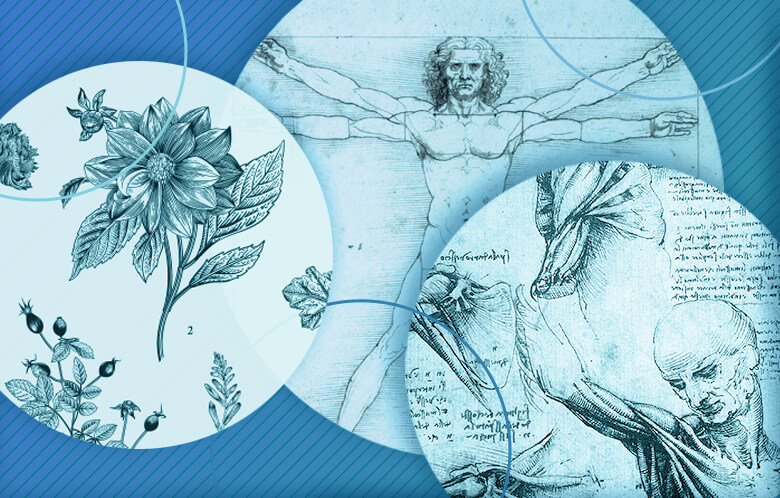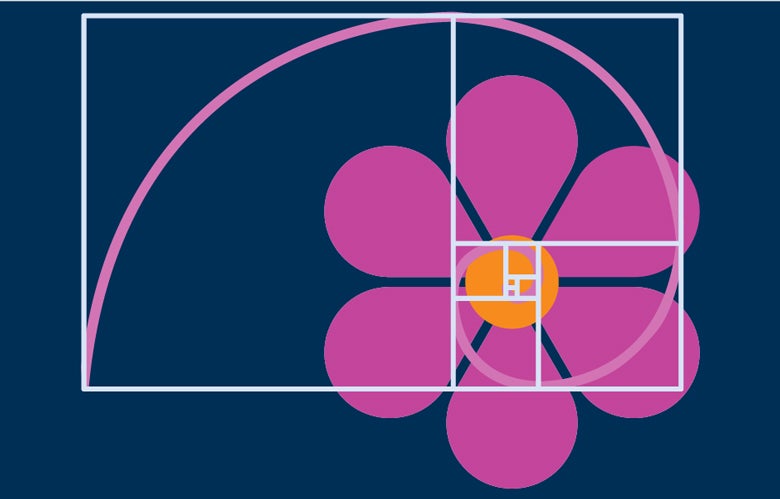This influence is on display in many instances ranging from Leonardo DaVinci’s scientific drawings to Marianne North’s intricate paintings of plants which were outlined in a previous blog post here.
Although they are often seen as separate areas, the two disciplines are clearly intertwined. The examples below demonstrate the ways in which technology has been used to create and present art, and how various visual media have been used to show and explain scientific ideas and technologies.
Maria Sibylla Merian (1647–1717) was a talented scientific illustrator who captured the natural world in her drawings and watercolor paintings. She recorded birds, insects, flowers and other elements in nature with minute detail - even capturing some species that are believed now to be extinct. Her illustrations were cited by the celebrated taxonomist Carl Linneaus in his work identifying species of plants and animals. You can see some of Merian’s works here that were on display at the Getty museum in 2008.
David Goodsell, a structural biologist and professor of computational biology at Scripps Research, creates striking, colorful images of the inner workings of cells. His art has been featured on the covers of science journals. His illustration of the novel coronavirus gained widespread attention in the press, and in an article for The Paris Review, he pointed out that his art is “very much tied to science.” The purpose of his paintings is to help others understand how things look and work.
In addition to the art that illustrates nature and scientific principles, physical art projects are another vehicle for drawing attention to science.
“The connections between art and science continue to be recognized and expanded through a variety of programs and projects.”
“The connections between art and science continue to be recognized and expanded through a variety of programs and projects.”
A modern example is the Foldscope created by Jim Cybulski and Manu Prakash at Stanford. Based on origami, the Japanese art of folding paper, the Foldscope is an inexpensive, portable, and useful microscope. In 2014, 70,000 of these paper pocket microscopes were distributed free of charge across the globe through a pilot program, with the simple request that users add their discoveries to Microcosmos, an online community where users share images and videos of their tiny findings.
Bio Art is described on the School of Visual Arts (SVA) Bio Art Lab website as the intersection of the “domains of the biological sciences and their incorporation into the plastic arts.” Founded by artist Suzanne Ankers in 2011, this lab is a space where she says tools and techniques for science “become tools and techniques in art practice.” In this case, biology serves as a basis for art. In Ankers’ series of photographs, the artist draws on the vanitas style of paintings by Dutch masters designed to expose the presence of death in life, by juxtaposing images of living things alongside images of decay. Her artful depictions of life and death, placed in a common piece of science equipment, is then photographed with a scientific apparatus, to prompt reflection on life.
Xavier Cortada is an artist who creates socially-engaged art around climate change, sea level rise and biodiversity loss. His 2018 project “The Underwater Homeowners Association,” involved the eco-artist working with people in Florida to create decorative lawn signs depicting how high above sea level their houses were located. His goal was to start a conversation about ecology and encourage people to find ways to take action about climate change and sea rise. You can see more of his science-within-art installations here.
The connections between art and science continue to be recognized and expanded through a variety of programs and projects, including the artistic residencies at CERN, the European Organization for Nuclear Research. The artists work alongside physicists and engineers to explore and integrate new technologies.
Additionally, through its aptly named publication Leonardo, MIT provides insight into “issues related to the interaction of the arts, sciences and technology” often focusing on scientific breakthroughs illustrated through an artful lens.
These are just a few examples that further illustrate the strong relationship between art and science. Together, the two disciplines help us interpret, study and explore the world around us.
EBSCO offers art and science research databases, including Art & Architecture Source and Applied Science & Technology Source Ultimate, providing a comprehensive collection of leading scholarship from all over the world.
Learn more about the EBSCO resources available to help researchers further explore the link between art and science.



